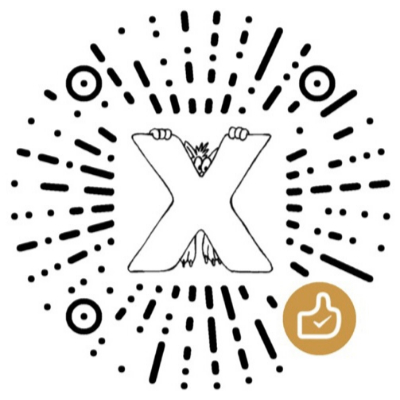In close relationships, love and conflict often coexist. Even the ESFP (performer personality) who is sunny and passionate and likes to enjoy the present cannot completely avoid the discomfort caused by emotional friction and differences. So, when they face disputes between couples, will they choose to deal with them head-on, or are they more inclined to avoid problems?
ESFPs are known for their optimistic and infectious personality, and are the focus of parties and the finishing touch of life. They are used to connecting others by creating a pleasant atmosphere. However, this tendency may become their weakness when dealing with emotional conflicts. This article will explore in-depth the expression and coping of ESFP personality in emotional conflicts, helping you better understand how this personality type faces the 'cloudy days' in the relationship.
📌 Want to know your MBTI personality type? Click to enter the official free MBTI personality test for PsycTest Quiz to obtain the special attribute analysis!
The tug-of-war between play and face: ESFP's conflict attitude
For ESFP, love is a journey full of surprises and adventures. They value the ease and joy in the relationship, but once conflict arises, they are prone to falling into a conflict between avoidance and face.
Data shows that 54% of ESFPs tend to deal with conflicts positively , while 46% choose to avoid them , which shows that ESFPs are not always 'optimistic' in emotional conflicts, and they are more likely to be driven by inner emotions.
Because of their strong emotional perception and high reliance on happiness, ESFPs often regard conflict as a threat to happy relationships, so they try to reduce tension by shifting topics, creating humor, etc. However, when they truly care about each other, they can also show strong empathy and listen carefully to their partner's emotional changes.
Misconceptions about ESFP's conflict handling: Escape, self-enclosure and defense counterattack
Like every personality type, ESFP has its unhealthy patterns that are prone to falling into when dealing with relationship conflicts.
1. Excessive humor and emotional transfer
ESFP tends to use humor to resolve tension in conflict, but if this 'understatement' method is frequently used to escape the problem, it may lead to important issues being covered up and eventually a bigger dispute breaks out.
2. Emotional impatientness and rush to end the conversation
ESFP hopes that the problem will pass quickly and does not like to stay in negative emotions for a long time. They may interrupt each other halfway, or try to divert the topic, so that they are not thorough enough to leave more misunderstandings.
3. Emotional defense or emotional closure
When feeling criticism or being forced into a corner, ESFP may suddenly remain silent and no longer respond to the emotional needs of her partner and enter the 'Cold War' mode. This defense mechanism, while temporarily allowing them to escape emotional stress, hinders real communication.
4. Overdefense or verbal attack
Some ESFPs may overdefend and even counterattack when they feel emotional threats. This intense emotional outbreak not only hurts the other party, but also makes the conflict more complicated.
💡 If you are an ESFP, it is recommended to actively propose a 'cooling-off period' when you are emotionally excited and tell your partner: 'I need some time to calm down and we will continue to discuss later.' This method can effectively avoid emotional out of control and improve communication efficiency.
Creating connections from conflict: ESFP's advantageous response strategies
While ESFPs may be prone to emotional or avoidance when facing conflicts, they also have many natural advantages in dealing with relationship contradictions:
1. Strong emotional feeling and perception
ESFPs can quickly detect their partner's emotional changes. Once they decide to listen carefully, they will show extremely high empathy and sincerely want to understand the other person's position. This emotional sensitivity is an important asset in building effective communication.
2. Optimistic spirit and positive thinking
ESFPs can find hope in negative emotions and have a unique perspective to resolve tension. For example, 70% of ESFPs will actively remind themselves of their partner’s strengths during conflicts , helping them maintain a positive mood and a grateful attitude.
3. Flexible and flexible, good at innovative solutions
They are good at finding inspiration in chaos and do not stick to traditional solutions. When facing complex problems, they are more likely to break out of the emotional circle, find consensus from a new perspective, and achieve a win-win situation.
4. Live in the present and be willing to let go of the past
ESFPs don't like to be tangled with past mistakes, they prefer to look forward. This trait helps quickly repair trauma and rebuild intimacy in relationships.
📖 Want to have a deeper understanding of the impact of MBTI personality on intimacy? Explore MBTI's advanced personality profile now to get a more personalized and in-depth personality analysis to help you create a healthier intimate relationship.
Conclusion: How ESFPs grow in conflict
Although ESFPs may fall into evasion or emotional defense in conflict, they also have unique intimate repair capabilities. As long as they can perceive their instinctive reactions and learn to communicate and listen more rationally, they can completely transform every conflict into an opportunity to deepen their understanding.
- If you are an ESFP, you might as well think about: Is your first reaction affecting the quality of your relationship with your partner?
- If your partner is an ESFP, understanding their emotional rhythm and expression may make communication smoother.
💬 Want to continue exploring the performance of other personality types in love? Welcome to read:
- Detailed Analysis of MBTI ENFP Personality
-More ENFP personality interpretation
📍PsycTest Quiz official website (psychtest.cn) is committed to providing users with scientific and free personality assessment services.
👉 Visit the PsycTest Quiz MBTI test portal now to start your personality exploration journey.
Link to this article: https://m.psyctest.cn/article/PqxD94dv/
If the original article is reprinted, please indicate the author and the source in the form of this link.

